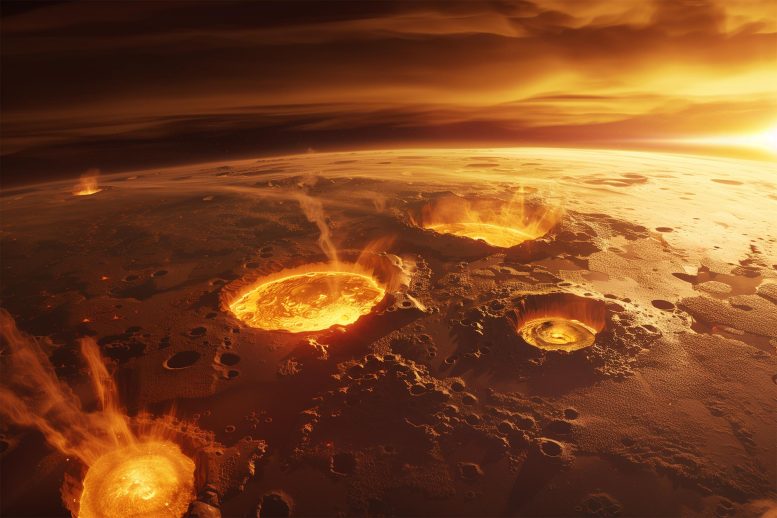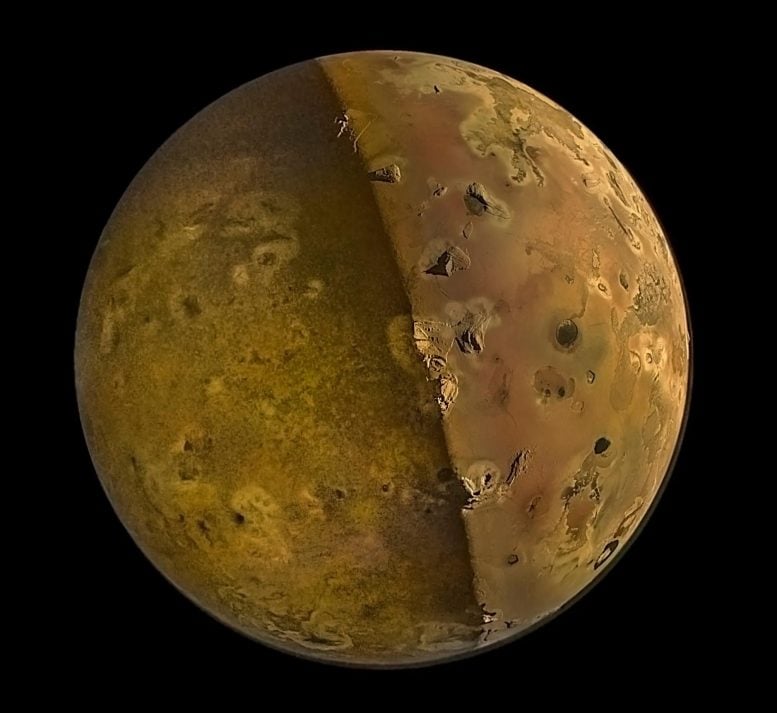
Sulfur and chlorine isotopes in the atmosphere of Io, Jupiter’s moon, reveal its continuous volcanic activity over the entire 4.57 billion-year history of the Solar System. Credit: SciTechDaily.com
Research using isotopic analysis of Io’s atmosphere suggests the moon has been volcanically active since the Solar System’s formation, influenced by tidal forces from Jupiter and its moons.
Sulfur and chlorine isotopes in the atmosphere of Jupiter’s moon Io suggest that it has experienced continuous volcanic activity throughout the 4.57 billion-year history of the Solar System, reveals a recent study. The research provides new insights into the moon’s volcanic history.
Known as the most volcanically active body in the Solar System, Io’s extreme volcanic activity stems from tidal heating. This heating is due to friction generated within the moon’s interior as it experiences gravitational pulls from Jupiter and its neighboring moons, Europa and Ganymede.

Jupiter’s moon Io, its night side illuminated by reflected sunlight from Jupiter, or “Jupitershine.” Credit: NASA/JPL-Caltech/SwRI/MSSS, Emma Wälimäki © CC BY
Geological Insights From Isotopic Measurements
However, how long Io has hosted such extensive volcanism isn’t fully understood. Due to the moon’s current level of volcanic activity, the surface of Io is constantly being reworked, leaving a geological record of only the most recent million years of its history. Stable isotopic measurements of volatile elements in Io’s atmosphere could provide information on the history of volcanism on Io.
Katherine de Kleer and colleagues used the Atacama Large Millimeter/submillimeter Array (ALMA) to observe the gasses in Io’s tenuous atmosphere and determine the stable isotopic radios of sulfur- and chlorine-bearing molecules.
Significant Findings on Atmospheric Composition
de Kleer et al. found that both elements are highly enriched in heavy isotopes compared to average Solar System values due to the loss of lighter isotopes from the upper atmosphere as material is continuously recycled between Io’s interior and atmosphere. The findings indicate that Io has lost 94% to 99% of the sulfur that undergoes this outgassing and recycling process. According to the authors, this would require Io to have had its current level of volcanic activity for its entire lifetime.
Reference: “Isotopic evidence of long-lived volcanism on Io” by Katherine de Kleer, Ery C. Hughes, Francis Nimmo, John Eiler, Amy E. Hofmann, Statia Luszcz-Cook and Kathy Mandt, 18 April 2024, Science.
DOI: 10.1126/science.adj0625









Be the first to comment on "4.5 Billion Years of Volcanism on Jupiter’s Moon Io Revealed by Atmospheric Isotopes"